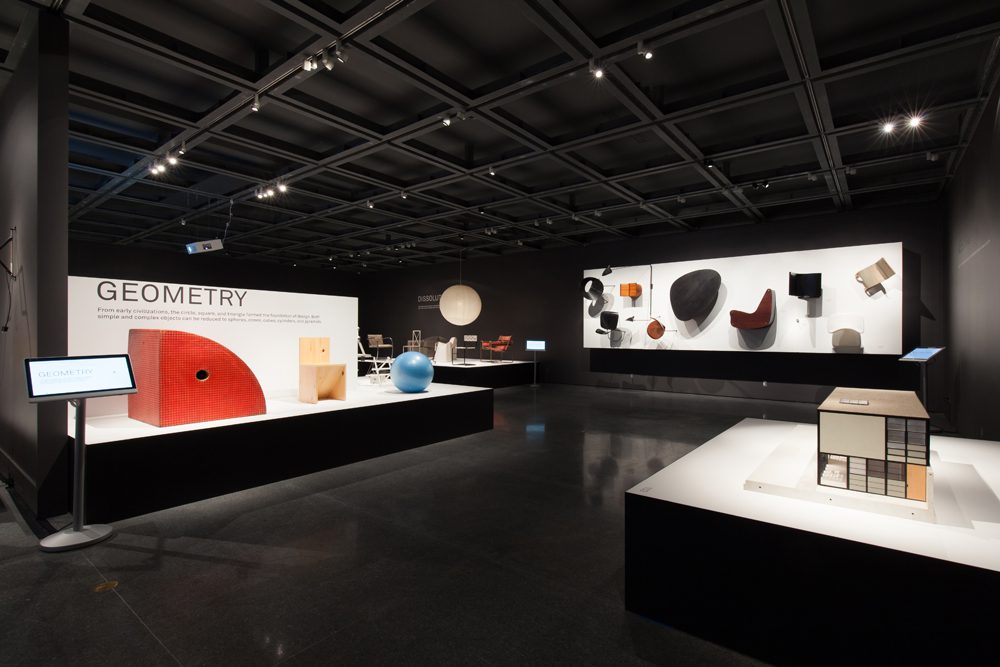Exhibition Pick: “The Essence of Things: Design and the Art of Reduction”
Charlie Tatum reflects on the function of objects at the New Orleans Museum of Art’s first exhibition of Modern design.

Installation view of “The Essence of Things: Design and the Art of Reduction” at the New Orleans Museum of Art. Courtesy the Vitra Design Museum, Weil am Rhein. Photo by Roman Alokhin.
“The Essence of Things: Design and the Art of Reduction”
New Orleans Museum of Art
1 Collins C. Diboll Circle
June 24–September 11, 2016
The craze surrounding Marie Kondo’s 2010 book The Life-Changing Magic of Tidying Up inspired many of us to aspire to living joyfully clutter-free. “The Essence of Things: Design and the Art of Reduction,” an exhibition from the collection of the Vitra Design Museum in Weil am Rhein, Germany, similarly poses Modernism as a process of making sense of the chaos of everyday life by the simplest means possible.
A prehistoric hand axe, a white t-shirt, and a credit card are all included in a display case of items whose creators emphasized functionality over decorative excess. Jumping off from here, “The Essence of Things” features themed clusters of mostly furniture, under the banners of “Logistics,” “Lightness and Compactness,” “Geometry,” etc. And, in these sections, for each aspect streamlined—whether concept, production, appearance, or function—the designer must decide to limit other reductions. A chair produced in one piece, like Architekturbüro Helmut Bätzner’s BA 1171 stacking chair, 1964-65, won’t necessarily be as easy to ship or as lightweight as other solutions. Before assembly, 36 Thonet No. 14 chairs can fit in a one-cubic-meter shipping crate, and Tokujin Yoshioka’s Honey-Pop Armchair is made entirely of foldable layers of honeycombed paper.
Identifying information and historicizing texts for the objects are somewhat confusingly hidden in iMac displays that only allow for one person to read them at a time. But if you’re able to snag a few moments at these stations, you’ll see the objects on view in the aesthetic and cultural context of significant artworks, monuments, and movements: Marcel Duchamp’s 1913 readymade Roue de bicyclette [Bicycle Wheel]; the Crystal Palace at the 1851 World’s Fair; Pop Art’s embrace of mass-media messaging.
Perhaps most importantly, “The Essence of Things” leaves us with much bigger questions than whether you’d want a chair made of multicolored melted plastic in your living room. The exhibition asks us to think critically about cutting back and what an object is at its core. Many designers have striven for cost efficiency—Charles and Ray Eames with their molded-plastic models—or visual cleanliness—Philippe Starck with his clear plastic La Marie chair. But for some, asceticism is a religious or imposed state of being. (An 1840 chair from a Shaker community is on view, and a learning station nearby references the forced, minimalist confinement of prisons.) Or, as with artist Andrea Zittel’s A-Z Escape Vehicle, ZA, 1996/97, Minimalism can be a space to imagine a different life or another self, a blank slate offering a place to build new worlds.



